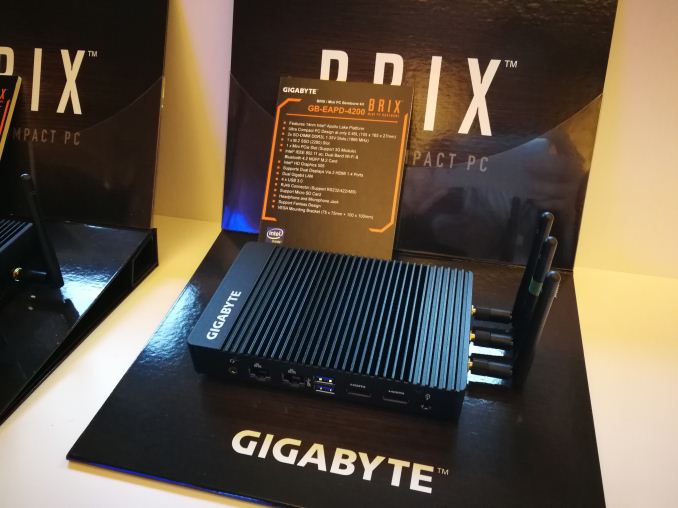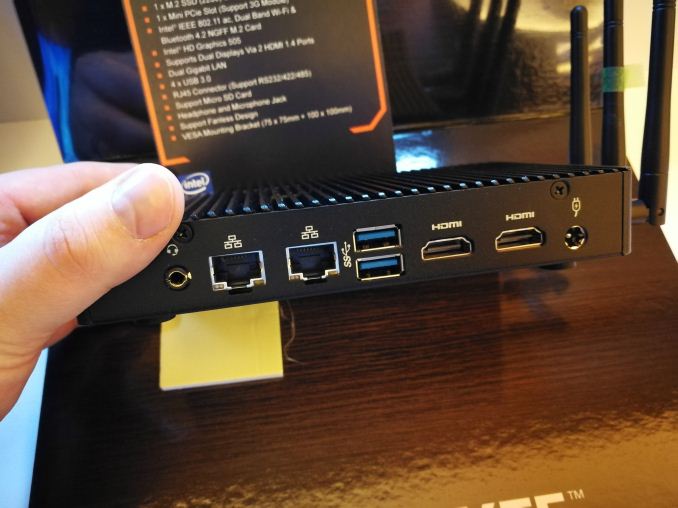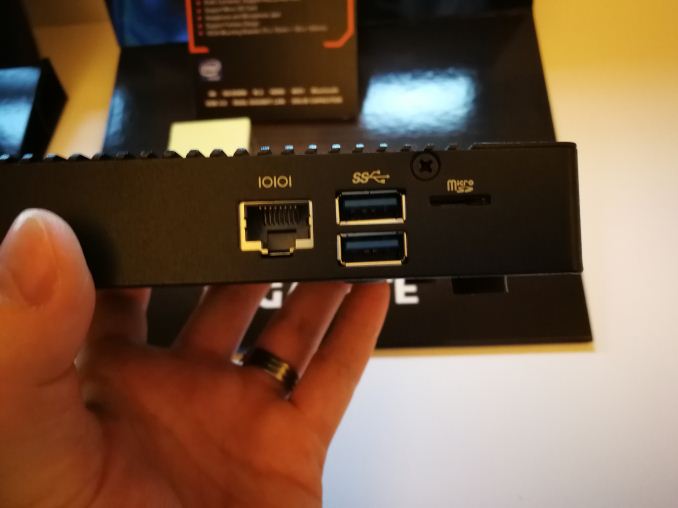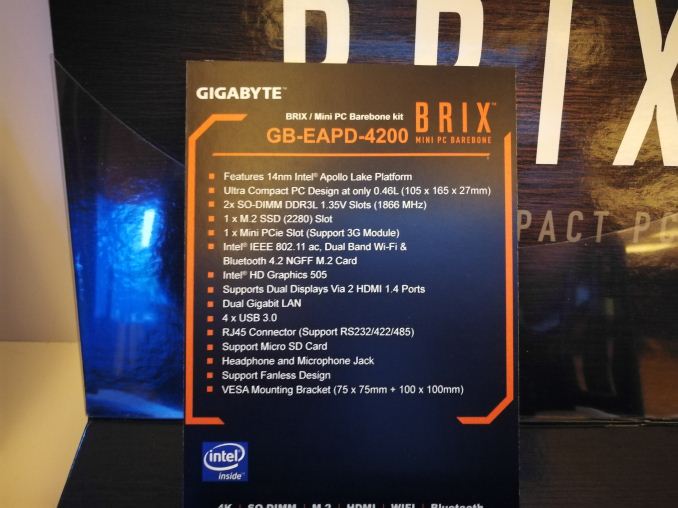CES 2017: GIGABYTE Shows Passive Apollo Lake BRIX in Embedded UCFF
by Ian Cutress on January 11, 2017 5:00 PM EST
Despite the candid approach that Intel has had to its Apollo Lake platform, we are now starting to see fully developed platforms coming out to play from the major vendors. (I personally have some APL motherboards for desktops in for testing sometime during Q1 as well.) One of these platforms was GIGABYTE’s embedded BRIX line, more focused at commercial deployments than consumer, but interesting nonetheless.
The main unit we saw was this: the GB-EAPD-4200 BRIX. Using an Apollo Lake SoC, it looks to be in a passive case and sports three WiFi antenna. The chassis is 0.46L, with support for 2x DDR3L-1866 SO-DIMM memory modules, one M.2 (2280) SSD slot and a mini-PCIe slot for a 3G WLAN module. The WLAN accounts for one antenna, and the other two come via an Intel 802.11ac card inside, most likely the 8265 or 8260 depending on how GBT’s design cycle was in play. Using Apollo Lake means getting HD Graphics 505, although given this system it is more than adequate for video playback or casual office use.
This unit has plenty of IO to keep the buyer satisfied – dual gigabit network ports, dual HDMI 1.4 display ports, four USB 3.0 ports and support for a microSD card. VESA support for 75mm and 100mm brackets is included.\
This unit is to be sold as a barebones kit, requiring DRAM and storage, most likely for system integrators to add their own hardware solutions depending on how local customers will want them configured (small DRAM counts and low storage, or something more robust). Interested parties will need to contact their local distribution partners for more information.

















15 Comments
View All Comments
Charlie22911 - Wednesday, January 11, 2017 - link
This would make a nifty pfSense box yes?liu_d - Wednesday, January 11, 2017 - link
Depends on what NICs are being used...dgingeri - Wednesday, January 11, 2017 - link
Considering it is using Intel wireless, probably not optimum, but still looks pretty good. Might work well for a Windows Server Essentials router box.WorldWithoutMadness - Wednesday, January 11, 2017 - link
too bad, it doesn't have d-sub. I usually use old monitor and leave it there for problem solving if somehow there's connection problem.CaedenV - Wednesday, January 11, 2017 - link
Hate to say it, but VGA is dead. You are not going to see any new Intel based boards with analog output any more unless there is a 3rd party graphics solution being used.doggface - Thursday, January 12, 2017 - link
VGA should always be an option on embedded products. Always.It is so cheap to implement and almost be default is on every chipset. The only reason I can see for why they didn't add it to this product, is that they didn't have room for the port.
Btw, anyone looking for a pfsense box should look up "qotom" (sold through amazon and Ali express) great 4 port x86 routers with intel nics. Arstechnica did a review on one for their DIY router piece.
nerd1 - Thursday, January 12, 2017 - link
PLEASE retire atom... core M is bare minimum, and we now have ARM chips just as powerful as core M but costs way lower!milkod2001 - Thursday, January 12, 2017 - link
Think about Core M as $$$ premium rebranded AtomsMrSpadge - Friday, January 13, 2017 - link
It's totally wrong if you do that.BrokenCrayons - Thursday, January 12, 2017 - link
Your bare minimum for acceptable performance can't be universally applied to everyone.